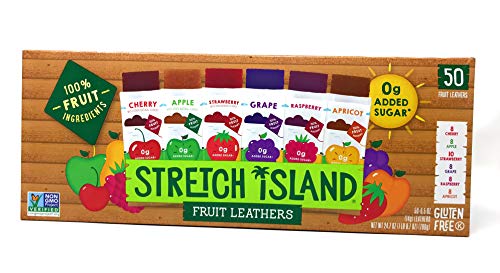How to Choose the Fruit Leathers
Fruit Leathers: Nature's Sweet and Healthy Treat

- 1. Fruit Leathers: Nature's Sweet and Healthy Treat
- 1.1. History and Origins
- 1.2. Preparation Process
- 1.3. Nutritional Value
- 1.4. Health Benefits
- 1.5. How To Select And Store Fruit Leathers
- 1.5.1. Selecting Fruit Leathers
- 1.5.2. Storing Fruit Leathers
- 1.6. Homemade Recipes
- 1.7. Enjoying Fruit Leathers
- 1.8. Conclusion
Fruit leathers, alternatively called fruit roll-ups, are a delectable and healthful snack crafted by dehydrating pureed fruit to achieve a leathery texture. This versatile and delightful treat delivers an intense natural sweetness appreciated by individuals of all ages. Known for its straightforward preparation and limitless flavor variations, fruit leathers have become increasingly popular not just for their taste but also for their nutritional advantages.
History and Origins
The origins of fruit leathers can be traced back centuries, rooted in traditional practices where fruit purees were sun-dried, a method employed across various cultures globally. For example, Native Americans crafted pemmican, a concentrated blend of dried meat, fat, and berries, akin to the modern concept of fruit leathers. Similarly, in the Middle East, "lavashak," a fruit leather made by sun-drying a blend of diverse fruits, has been a popular delicacy.
In today's context, commercially manufactured fruit leathers have gained popularity among health-conscious consumers seeking alternatives to sugary snacks and synthetic additives. Although certain commercial varieties may contain added sugars or preservatives, homemade fruit leathers afford greater control over ingredients, presenting a healthier choice.
Preparation Process
Crafting fruit leathers involves a relatively simple process with a few fundamental steps, primarily centered around the use of fruit. Virtually any fruit, alone or in combination, can be utilized, allowing for a wide array of flavors. While common choices encompass strawberries, apples, mangoes, peaches, and various berries, the options are as extensive as the diverse range found within the fruit kingdom itself.
The fruit is blended into a smooth puree, sometimes incorporating natural sweeteners like honey or agave syrup, depending on individual taste preferences. Additional enhancements to the flavor profile can be made by introducing spices such as cinnamon or a hint of citrus juice.
Following the preparation of the puree, it is evenly spread onto a baking sheet or a specialized dehydrator drying sheet to ensure uniform thickness for consistent drying. These sheets are then positioned in a dehydrator or oven set at a low temperature, typically around 140°F (60°C), for several hours. The duration of this process may vary based on the fruit's moisture content and the desired final texture, ultimately resulting in a flexible, leathery consistency.
Nutritional Value
Fruit leathers are a healthy snack option as they retain many of the nutrients found in fresh fruit. They are a good source of vitamins, fiber, and antioxidants, depending on the fruits used. However, commercially produced fruit leathers may sometimes contain added sugars, so it's essential to check the ingredients for the healthiest options.
Health Benefits
The nutritional value of fruit leathers is one of their most enticing features. Derived from whole fruits, they preserve the fiber content, promoting digestion and delivering a gradual release of natural sugars, sustaining energy levels.
Additionally, fruit leathers offer a great solution for minimizing food waste. By transforming slightly overripe or less fresh fruits into these leathers, one can effectively prolong their shelf life while retaining their nutritional advantages.
How To Select And Store Fruit Leathers
Selecting Fruit Leathers
- Ingredients: When selecting fruit leathers, prioritize those made with high-quality ingredients. Opt for products with minimal additives or preservatives. Natural fruit leathers crafted from 100% pureed fruit without added sugar or artificial ingredients are the healthiest choice.
- Flavors and Varieties: Fruit leathers are available in an array of flavors and combinations. Choose according to your taste preferences, whether it's single fruit leathers like apple or mango, or blends such as strawberry-banana or mixed berries.
- Texture and Consistency: A good fruit leather should have a consistent, pliable texture. It should not be too brittle or overly sticky. It should be soft enough to roll or fold without cracking but firm enough to hold its shape.
Storing Fruit Leathers
Proper storage is crucial to maintain the taste, texture, and quality of fruit leathers.
- Room Temperature: Fruit leathers are best stored at room temperature in a cool, dry place away from direct sunlight. Keep them in a pantry or cupboard, ensuring they are protected from humidity and excessive heat.
- Air-Tight Containers: If you've opened a package of fruit leathers and don't plan to consume them all at once, transfer the remaining strips into an airtight container or resealable bags. This helps preserve their freshness and prevents them from becoming overly dry.
- Avoid Moisture: Moisture is the enemy of fruit leathers as it can cause them to become too sticky or grow mold. Ensure the storage containers are moisture-free and sealed tightly.
- Refrigeration (Optional): While fruit leathers generally don't require refrigeration, if you live in a very warm or humid climate, or if your home is prone to temperature fluctuations, storing them in the refrigerator can prolong their shelf life. Place them in a sealed container or resealable bags to prevent exposure to other food odors.
Homemade Recipes
Making fruit leather at home is a fun and straightforward process. Here's a basic recipe:
Homemade Fruit Leather Recipe
Ingredients:
- 4 cups of ripe fruit (strawberries, peaches, apples, etc.)
- Sweetener (optional): honey, sugar, or agave syrup
- Lemon juice (to preserve color)
- Spices (optional): cinnamon, nutmeg
Instructions:
- Wash and prepare the fruit, removing any pits, cores, or seeds.
- Puree the fruit in a blender or food processor until smooth.
- Add sweetener, lemon juice, or spices if desired and blend again.
- Spread the puree onto a lined baking sheet or a food dehydrator tray.
- Dry in an oven or food dehydrator at low temperatures (around 140°F/60°C) for 6-8 hours, or until the fruit leather is no longer sticky to the touch.
- Cut into strips and roll them up for individual servings.
Enjoying Fruit Leathers
Fruit leathers offer a wide range of ways to be enjoyed. Whether sliced into strips, squares, or playful shapes, they serve as an ideal on-the-go snack for both children and adults. Moreover, they can add a delightful flavor as an ingredient in DIY granola bars, yogurt parfaits, or as a topping for treats such as ice cream or cakes.
Conclusion
Fruit leathers present an excellent opportunity to savor the inherent goodness of fruits in a convenient and delightful manner. Their simplicity in preparation, diverse range of flavors, and health advantages establish them as an outstanding substitute for processed snacks. Whether purchased from a store or crafted at home, these delightful snacks harmoniously combine flavor and nutritional value, rendering them an optimal selection for individuals in pursuit of a guilt-free, naturally sweet snack.










